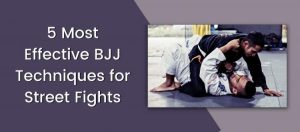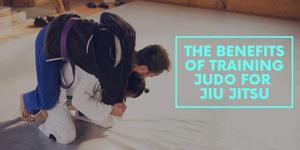Street fights are dangerous situations that should be avoided if possible. The person disputing with you may have a weapon and it would not be wise to provoke them. However, if you encounter a situation where a street fight is inevitable and running away is not a viable option, knowing how to fight is highly beneficial. Additionally, being able to wrestle a person to the ground is an important skill in these types of scenarios because grappling grants you the ability to control and neutralize a person while minimizing the damage taken. This article describes multiple takedowns that would be effective in a street fight.
Takedowns from the Back
Being able to maneuver around the opponent and get to their back is significant. This is one of the safest position possible to clinch and take an opponent down. If you have complete control of their back, the opponent will no longer be able to throw any strikes and you could avoid a lot of their strength head on.
1. Arm Drag
The arm drag is one of many techniques for getting to the opponent’s back. The subsequent instructions provide details on arm dragging an individual’s right arm.
-
When the opponent reaches out to grab or punch you with their right hand, use your left hand to grab the opponent’s wrist and push it in the direction of your right hip.
-
Take a step forward with your left foot and grab the tricep area above the opponent’s right elbow with your right hand. Do both of these actions at the same time.
-
Pin their arm to your chest as your body is moving forward.
-
As you pivot around your opponent, pull the opponent’s arm with your torso rotation. This makes the arm drag more powerful by using your whole body instead of just your arm strength.
-
Reach for their far hip with your left hand to help pull yourself around their back and prevent them from turning to face you.
-
Complete the circling motion and secure the back control.

The images above show the arm dragging process of grabbing the triceps and reaching for the far hip.

Hand Positioning and Grips
Upon turning the corner and reaching the opponent’s back, use either of the following two choices to obtain the rear clinching position.
Bicep and Wrist Control – For this example, you will have a two-on-one grip of your opponent’s left arm from the rear clinch position. Grab the opponent’s left wrist with your right hand and use your left hand to hook their bicep.

The individual has achieved back control with a two-on-one grip and planted their head safely between the other person’s shoulders.
2. Leg Trip
The leg trip is an excellent method to bring an opponent down from the standing back control position. It involves kicking out or tripping one of the opponent’s leg as you drag them down onto that collapsed side.
-
Body Lock – With a body lock, you could choose to bring your opponent down to either side. A hip tilting motion should be incorporated with this grip to make the takedown easier. This motion requires digging and yanking the forearm, that is on the same side as the foot you are tripping, into their hip at a backward and downward angle during the whole takedown sequence.
-
Bicep and Wrist Control – Taking the opponent down on the same side as their trapped arm, by your bicep and wrist control, will remove their ability to post and reverse the position.
-
Bigger Opponents – For dealing with bigger opponents, add the movement of leaning them towards the opposite side first. This action will cause the opponent to brace and distribute a majority of their weight to that side, which makes the other leg easier to kick out.
The images below exhibit how to complete the leg trip takedown.

Place the arch of your foot behind their heel.

This image illustrates a two-on-one grip of the opponent’s left arm. Additionally, the person with back control is simply falling back and rotating towards the blocked left foot.
3. Double Leg Takedown (from the rear clinch)
Another takedown option from the rear clinch is the double leg takedown. Unlike shooting for the standard double leg, you are not smashing your knee on the ground or risking the chance of your opponent sprawling on top of you.
Slide both hands to the opponent’s knees.

Slide your arms down to the opponent’s waist.

The person on the right is showing the head and hand placements needed for this body lock takedown to succeed.
4. Knee Tap Alternative
On the occasion where your opponent is able to keep their hips back and making it difficult for you to perform the body lock takedown, implement the knee tap technique.
-
This knee tap technique involves placing your leg outside and behind their lead leg.
-
Pivot on the balls of your feet, of the lead leg, and swing your knee inward to hit the back of the opponent’s knee. This action will cause their front leg to give out.
- Twist the opponent’s body towards the buckled knee to finish the takedown.

Examine how the man on the right is placing his lead leg behind the opponent’s leg.

This is an alternative to using the body lock grip for the knee tap. As the individual buckles his opponent’s knee, he is using his right underhook and left hand placement to tilt his opponent and take him down.
Want to Practice Your Takedowns?
Other than going to class regularly and practicing your takedowns, the other option you have is to get a grappling dummy. Although it’s not ideal, a grappling dummy can help you develop good form and it is what some wrestlers use to practice their throws. Here is the grappling dummy I recommend for practicing takedowns:
Combat Sport Grappling Dummy

5’10” tall
70/90/120/140 pounds
- Made of nylon
- Great for practicing takedowns, ground positional control, and submissions
-
- Stands up on its own




